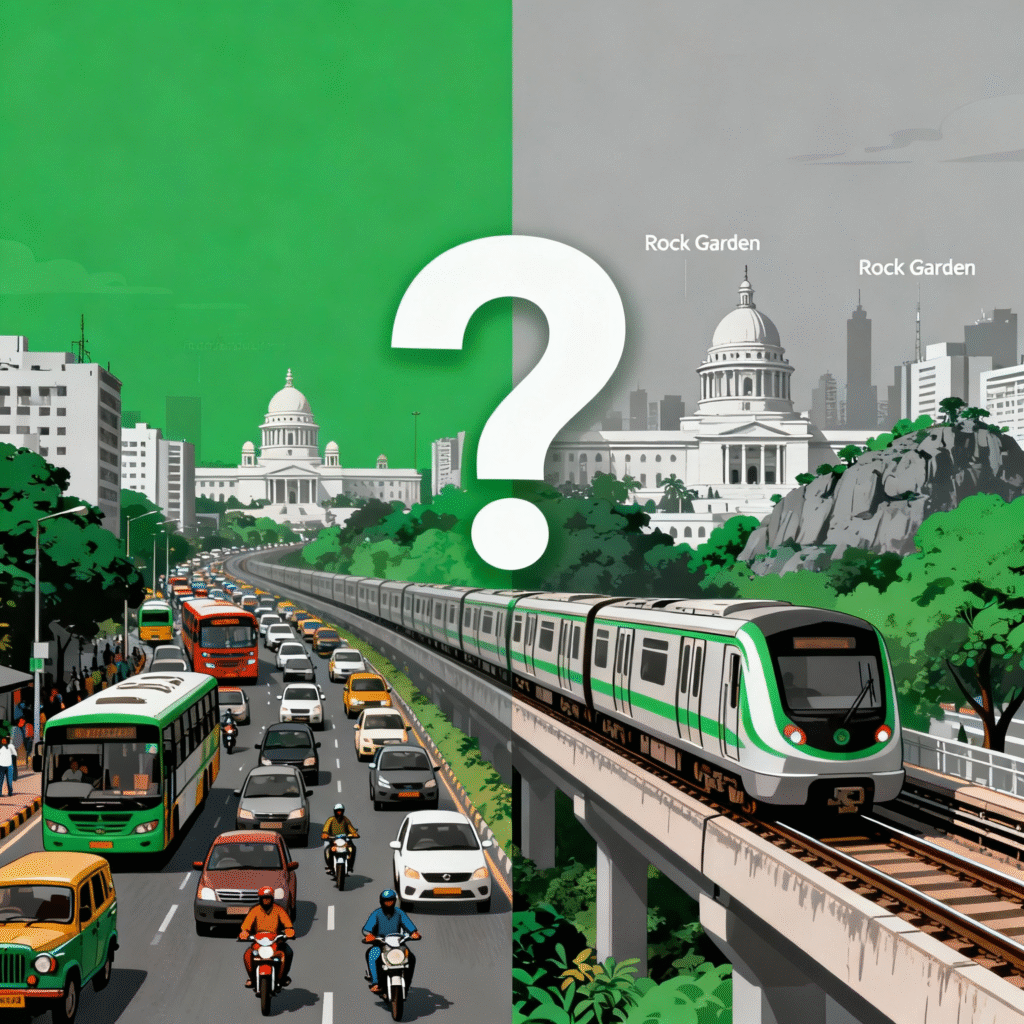Chandigarh: Once known for its calm roads and planned structure, the City Beautiful now faces growing congestion and transport challenges. The question echoing across local circles and government offices is — does Chandigarh really need a metro?

The Vision Behind the Chandigarh Metro Plan
The Chandigarh Administration, in collaboration with the Union Territory of Chandigarh, Haryana, and Punjab, has revived the Chandigarh Metro project, a long-discussed plan originally proposed in 2009. The project aims to connect Chandigarh, Mohali, Panchkula, and Zirakpur, forming a Tricity Metro network to ease traffic congestion and reduce pollution.
According to the Delhi Metro Rail Corporation (DMRC), which prepared the detailed project report (DPR), the first phase will cover approximately 77 kilometers, focusing on the busiest routes like ISBT Sector 43 to Panchkula and from Aerocity to PGI.
The Case for the Metro
Supporters argue that Chandigarh has outgrown its once-perfect urban layout. With thousands of vehicles being registered each month and Tricity’s population crossing 2 million, the pressure on roads is evident.
“Public transport is the backbone of any modern city. The metro will not only decongest roads but also promote sustainable urban mobility,” said a senior official from the Chandigarh Transport Department.
Environmentalists, too, favor the idea. They believe that a metro system could help reduce carbon emissions, making Chandigarh a model for eco-friendly transport among medium-sized cities.
The Counterargument: Too Early for a Metro?
However, not everyone is convinced. Urban planners argue that Chandigarh’s size and density may not justify the multi-thousand-crore metro investment.
“The city’s population density is relatively low compared to Delhi or Mumbai. A full-fledged metro could become a costly underused asset,” said an urban development expert from Panjab University.
Many citizens suggest focusing on improving the existing CTU bus network, adding electric buses, and creating dedicated cycling and walking lanes before considering an expensive metro line.
“Before spending on a metro, let’s make the bus service punctual and reliable. That would solve half the traffic issues,” remarked a resident from Sector 44.
The Economic and Environmental Balancing Act
While the project promises cleaner mobility, its financial viability remains in question. Estimates suggest the metro could cost over ₹10,000 crore, requiring both central and state support.
Experts suggest adopting a phased approach, starting with light metro or rapid bus corridors (BRTS) to gauge demand and feasibility. This hybrid model has worked successfully in several developing cities across Asia.
The Way Forward
The Chandigarh Administration has yet to take a final call. A recent meeting between the Ministry of Housing and Urban Affairs and the Tricity governments hinted that the project may move forward under a Public-Private Partnership (PPP) model to reduce the financial burden.
Meanwhile, citizens remain divided. Some see the metro as a sign of progress; others view it as premature for a city still maintaining manageable traffic levels.
Key Highlights:
- Chandigarh’s metro project aims to connect the Tricity — Chandigarh, Mohali, and Panchkula.
- Supporters cite decongestion and sustainability as major benefits.
- Critics argue the city’s population density doesn’t justify the cost.
- Alternative solutions include improved bus systems and electric mobility.
- The final decision may depend on funding models and public response.
Overview
The debate over the Chandigarh Metro reflects the city’s growing pains. Once designed for limited traffic, Chandigarh now faces a mobility dilemma — evolve or endure. While a metro could transform urban commuting, the city must weigh its economic feasibility, environmental impact, and public need before taking the final leap.
Whether Chandigarh truly needs a metro or just smarter transport planning remains a question the city must answer with foresight, not haste.
